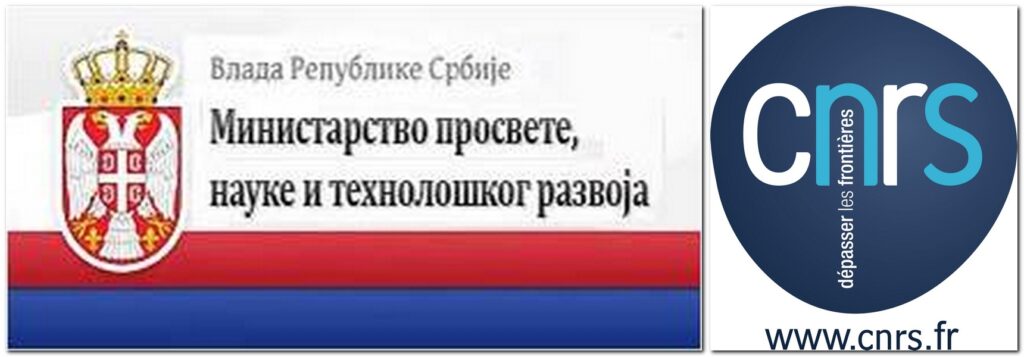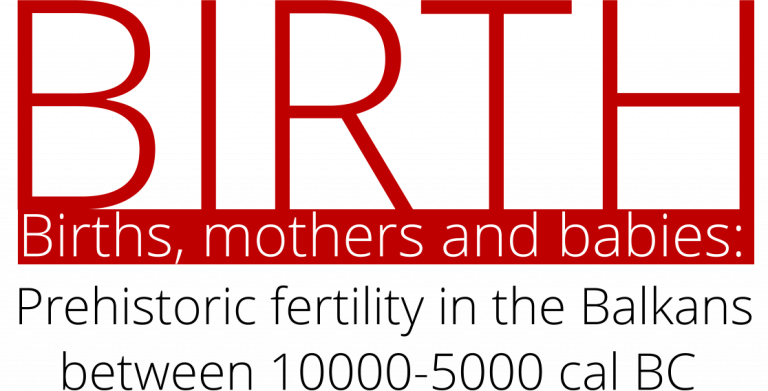Laboratory for Bioarchaeology
1. Bioarchaeology of Ancient Europe: people, animals and plants in the prehistory of Serbia
Ministry of Education, Science and Technology
1.1.2011 – 31.12.2019.
Prehistoric heritage of Serbia is an inseparable and important part of European culture. The people who created the (pre)neolithic cultures, Lepenski vir, Starčevo or Vinča, can be seen as the founders of ancient Europe. Unfortunately, the great scientific potential of this heritage is insufficiently utilized considering the great possibilities of applying the methods of natural sciences in the reconstruction of the past. Through our program, a team consisting of archaeologists, physical anthropologists, archaeozoologists, archaeobotanists, molecular biologists and chemists investigated the interactions of humans, animals and plants and with the analysis of artifacts provided a better understanding of one of the most important events in human evolution, the transition from a hunter-gatherer lifestyle to agriculture. By applying modern methods of analysis from a range of natural sciences, direct analysis of human, animal and plant remains, as well as a series of archeometric procedures on the material culture of past communities, we provided answers to questions about the origin and the consequences of accepting the Neolithic way of life, which are in the foundations of the entire later development of humanity. During the project we analyzed the ancient DNA of people, animals and plants using PCR, the analysis of lipid traces using a mass spectrometer and gas chromatograph, as well as the analysis of inorganic remains, ceramics, stone and metal using XRF. The program enabled our researchers to deal with some of the most current phenomena of European prehistory, such as the first use of milk and milk products.
2. Bridging the European and Anatolian Neolithic: Demography, Migration, and Lifestyle at the Advent of Civilization (BEAN)
European Union
Grant agreement ID: 289966
1.2.2012 – 31.1.2016.
One of the most interesting questions in prehistory is that of the origins of European peoples following the introduction of settled farming life to the continent some 8,000 years ago. The interdisciplinary BEAN network addressed this by combining teaching and research in three different fields: i) Anthropology and genetics, ii) computer simulation and modeling, and iii) prehistoric archaeology. Particularly, it provided state of the art training in palaeo-genomics, mathematical modeling of prehistoric culture change and statistical demographic inference methods. The network included one industrial and seven academic participants and five associates and incorporated an integrated educational system that combined intensive specialized training in each subject and rotation of early stage and advanced researchers. This research have had wider impact, for example within the multibillion-euro cultural heritage industry, and BEAN included internships at three private sector partners; a biotech company, a tourist company and a publisher, as well as the German national statistics office. Participants engaged with cutting edge scientific methods, combined diverse disciplines and schools of thought and had contacts with private companies and state organizations for further career development. Additionally, there was a special focus on translational skills, particularly media relations and scientific writing, both of which used for the final “BEAN-book”, which was co-authored by ESRs, ERs and PIs, and published by Springer.
3. Excavation of Mokrin necropolis (2100-1800. BC)
Ministry of Culture and Information of Serbia
2020 – today
After 50 years since the last excavation at the necropolis in Mokrin, and taking into account the importance of this material for the Early Bronze Age of Serbia and the region, as well as in accordance with the progress of science and its application in archaeology, the project includes geo-positioning of the necropolis, determining the precise location of the explored and unexplored part, mapping using a GIS platform, excavating 10-15 graves using the most modern archaeological and bioarchaeological methods in order to collect organic remains that were not collected in past research, but also for the purpose of newer analyzes of ceramic and metal items, digitization of existing archaeological documentation, precise timing of the beginning and end of the use of the necropolis based on 10 new high-precision radiocarbon dates, as well as the realization of exhibitions and workshops through which the importance of modern approaches and today’s possibilities of reconstructing the past would be demonstrated. Aside from gathering new information, one of the project aims is to collate all the necessary data to start the process of official protection of the archaeological site.
4. Gifts for the voyage: digitization of finds from Early Bronze Age graves from Mokrin necropolis
Ministry of Culture and Information of Serbia
2022
The material from the necropolis in Mokrin is the subject of research by numerous experts from various institutions. This means taking it out of the museum and temporarily storing it in depots and laboratories of various institutions while research is ongoing, which reduces its availability and puts it at risk of potential damage and loss. The digitization of movable material from the necropolis in Mokrin will enable its research without removing the material from the National Museum in Kikinda, which will reduce the chances that the items becoming damaged or lost during packaging and transport. Digital facilities will also allow several researchers from different institutions to work on the same material at the same time, which will speed up the research process. Metadata of digital objects will represent a good substitute for viewing or presenting physical documentation of artifacts from Mokrin, and will facilitate the research process and statistical analysis on the one hand, and preserve the integrity of the documentation without which the artifacts lose their context and a large part of their value.
5. The Holocene History of Human-Wildlife Conflict and Coexistence: Archaeozoological, Archaeobotanical, Isotopic, Ancient DNA, Iconographic and Written Evidence from the Central Balkans (ARCHAEOWILD)
Science Fund of Republic of Serbia
17.1.2022-17.1.2025.
Archaeowild aims to study the HWC diachronically, from the Mesolithic throughout the Middle Ages within one of the most important European biodiversity hotspots – the Central Balkans. As no comprehensive research has been dedicated to the history of human-wildlife interactions in the region so far, ARCHAEOWILD will provide an exclusive overview of the spatial and temporal distribution of wild animals and plants in the Holocene. We will also study the dynamics of regional extinctions of globally extinct mammals (aurochs and European wild ass), as well as the origin of exotic wildlife, of unknown status (fallow deer and leopards). By the employment of a large scale of biomolecular data (aDNA and C/N isotopes), we aim to give a novel insight into the paleoecology (diet and phylogeography) of native species commonly hunted in the Holocene past (red deer and brown bear), and therefore to understand the diachronic implications of anthropogenic pressure to the environment. The questions ARCHAEOWILD is addressing are highly relevant for understanding the human-wildlife interactions in the European past, as well as for contemporary environmental issues, conservation and management of wildlife.
6. Ljudi Lepenskog vira (People of Lepenski Vir)
https://biosens.rs/en/projects/ljudi-lepenskog-vira-protokoli-digitalizacije-bioarheoloskog-nasledja
7. Rekonstrukcija groba 69 – Metahuman
8. Prefert: Prehistoric fertility: length of lactation in the Mesolithic and Neolithic of South-Eastern Europe (10000- 5500 B.C.)


